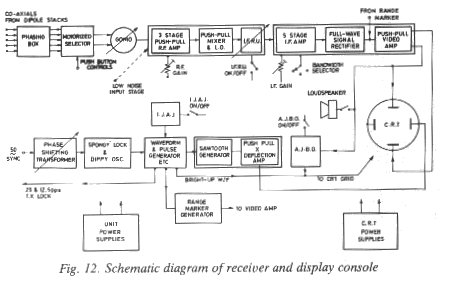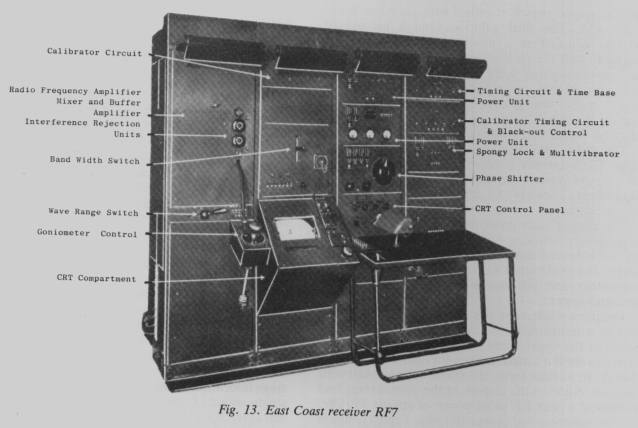The Chain Home radar system


The very special care taken in the design of the focussing, deflection amplifiers, astigmatism correction and shift controls plus the high quality and resolution of the CRT, was a significant feature of the display unit and contributed in no small measure to the ability of skilled operators to detect and track targets of very low signal-to-noise ratios which might otherwise have been missed.
As mentioned earlier, the normal operating p.r.f. of the radar was 25 p.p.s., locked to a preset point on the mains 50 Hz waveform, allowing stations in the chain to operate without interfering with each other. The phase of a 50 Hz sine wave derived from a phase-shifting transformer, energized from the mains supply, was used to lock a Dippy oscillator operating at 25 Hz. The locking was 'spongy' and worked in a manner similar to that of the flywheel time-base of a modern television set. The phase of the sine wave output of the phase-shifting transformer was continuously adjustable relative to the mains cycle, permitting a precise timing point to be chosen.
Each CH station was allocated a particular 'spot on the dial' from which it was not allowed to deviate without special permission from HQ! In conditions where severe 'scatter' from the ionosphere caused 'nth time around' clutter on the display, the operator would often, unofficially, move the dial in an endeavour to 'phase' it off the screen, thus often causing chaos further along the chain!
(This article is taken from "The GEC Journal of Research", Vol. 3 No.2 1985 pages 73-83 and has been reproduced with the kind permission of the Editor. The copyright of the material remains with the owner.)



